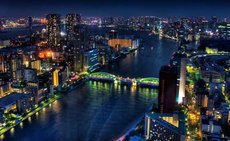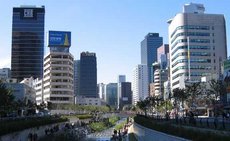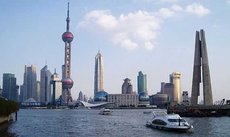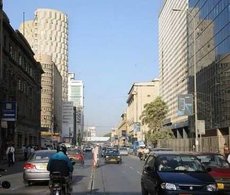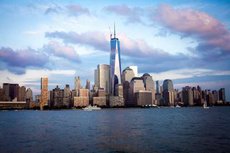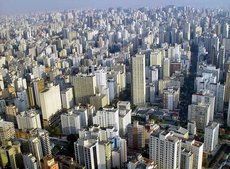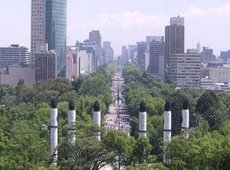This article provides detailed information on the ten biggest cities in the world.
Data on the ten biggest cities in the world in this article focus on their metropolitan areas.
Most reference material will have two entries, the city size and the metropolitan are size.
The metropolitan area, also known as the metro or metro area, includes the densely populated original/core part of the city plus its less-populated surrounding urban territories that share the infrastructure, industry and housing.
Below are the ten biggest cities in the world according to a range of sources including The World Atlas and The United Nations. The ten biggest cities in the world are:
1. Tokyo
Tokyo, the capital of Japan, with a metropolitan (greater Tokyo area) population of 37,126,000 people, is the largest city in the world. The inner core, known as the Tokyo Metropolis has a population of 13,185,502.
According to the Mercer and Economist Intelligence Unit, Tokyo is the most expensive city for expatriates.
Monocle magazine named Tokyo the third most liveable city globally. It received more Michelin stars than any other city worldwide.
In Japanese “Tokyo” means “Easter Capital”.
2. Jakarta
Jakarta, the capital of Indonesia (the world’s 4th most populous country), officially known as the Special Capital Region of Jakarta (Daerah Khusus Ibu Kota Jakarta), is the second largest city in the world.
It has a metropolitan population of 26,063,000 people.
The city itself (the core) has a population of 10,187,595.
The word “Jakarta” is derived from “Jayakarta” which comes from Old Javanese and means “victorious deed”, “complete act”, or “complete victory”.
3. Seoul
Seoul is the capital of South Korea and the third largest city in the world, with a metropolitan area population of 22,547,000 people.
The city itself, known as the Seoul Special City, has a population of 10,442,426.
More than half of South Korea’s fifty million people live in Seoul, as do 632,000 international residents.
The word “Seoul” has a straightforward and practical origin. It means “capital city” in Korean.
4. Delhi
Delhi, known as the National Capital Territory of India, is the fourth largest city in the world with a metropolitan population of 22,242,000 million people.
Delhi has served as a capital to an assortment of kingdoms and empires since the 6th century BC. Modern Delhi is a collection of cities spread across the metropolitan region. That is why some people call it the City of Cities.
There are several theories to how Delhi got its name. Some say it is derived from Dhillu or Dilu, a king who constructed a city where Delhi is now located in 50 BC; he named it after himself.
Others believe it is based on the Hindi/Prakrit word dhili, meaning “loose”, and that the Tomaras used the term to refer to a city because the Iron Pillar of Delhi had to be moved as it had a weak foundation.
5. Shanghai
Shanghai, with a metropolitan population of 20,860,000 people, is China’s largest city and the fifth largest in the world.
As well as being a global financial center and a transport hub, it is the busiest container port in the world.
Shanghai had been an important trading, administrative and shipping town for many hundreds of years, but grew rapidly in the 19th century after the Europeans saw it as an ideal port location and recognized its economic potential.
The word Shanghai means “upon the sea”. The Chinese character 上 (shang) means “above” and 海 (hai) means “sea”.
6. Manila
Manila, the capital of the Philippines, has a metropolitan population (Metro Manila) of 20,767,000 people.
Metro Manila is the economic, commercial, cultural and political heart of the Philippines. It also houses the seat of the executive and judicial branches of the government.
The city became an important center of Spanish activity in the Far East. It was one end of the Manila-Acapulco Galleon trade route that linked Asia, Latin America and Europe.
Manila gets its name from a plant There are two Tagalog words: “may” (there is) and “nilad” (the name of a shrub) which together form the word that today is Manila.
7. Karachi
Karachi, also known as the City of Lights, is the most populous metropolitan city of Pakistan and the seventh in the world with a metro population of 20,711,000 people.
It is the country’s center of industry, banking, economic activity and trade, and is home to Pakistan’s largest companies.
Karachi used to be Pakistan’s capital city until Islamabad was built as a capital in order to encourage development in other parts of the country. Policymakers at the time felt Karachi housed a disproportionate amount of the countries wealth and activities.
Legend has it that the city began as a fishing settlement, where a fisherwoman, Mai Kolachi, laid down her roots and started a family.
8. New York
New York, usually referred to as New York City or the City of New York, is the largest city in the United States and the eighth largest in the world. The New York metropolitan area has a population of 20,464,000 million people.
It is known as the “City that never sleeps.”
New York is a powerful and influential city both domestically and internationally. It is a huge center of finance, commerce, media, fashion, research and development, entertainment, education and diplomacy.
The city was called New Amsterdam in 1626 until it came under English control in 1664. The English changed its name to New York to honor the Duke of York, who later became King James II.
9. São Paulo
São Paulo is the largest city in Brazil and the ninth largest in the world. The São Paulo metropolitan area has a population of 20,186,000 people.
It is Brazil’s most important area of commerce, finance, arts and entertainment.
São Paulo is the largest city proper in the southern hemisphere and in the Americas with a core population of 11,316,149 people.
São Paulo houses the Futures Markets, the São Paulo Stock Exchange and the Cereal Market Stock Exchanges (the second largest in the world in market value).
The city has its name in honor of Saint Paul of Tarsus.
10. Mexico City
Mexico City, known in Spanish as La Cuidad de Mexico, and officially as Mexico D.F (Distrito Federal) and informally as D.F., is the largest city in Mexico and the tenth largest in the world.
Mexico City has a metropolitan population of 19,463,000 people.
Mexico City is by far the country’s most important financial, commercial, political, cultural and educational center.
The city was built by the Aztecs in 1325 on an island of Lake Texcoco, and was called Tenochtitlan.
Of the ten biggest cities in the world, seven are in Asia and three in the Americas.

